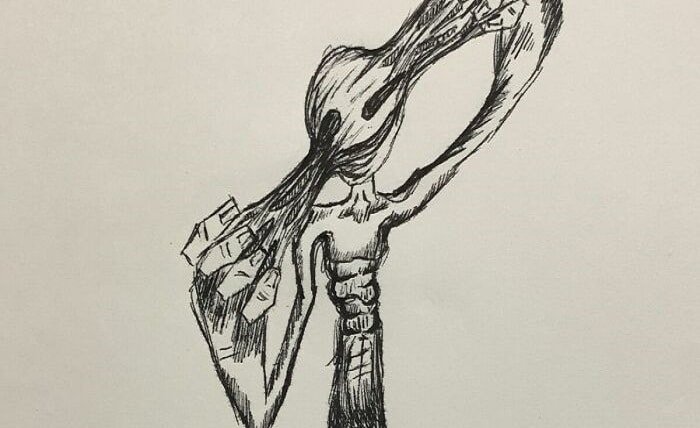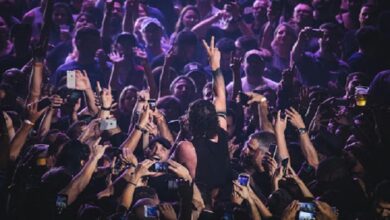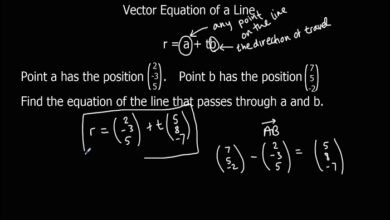Delving into the Dark: The Fascinating World of Creepy Drawings

Creepy drawings have long captivated audiences with their ability to evoke fear, intrigue, and fascination. These unsettling artworks delve into the darker aspects of the human psyche, blending imagination with elements of horror and mystery. From haunting landscapes to grotesque figures, creepy drawings challenge our perceptions and stir deep emotional responses. This blog explores the multifaceted world of creepy drawings, examining their origins, techniques, notable artists, and their enduring impact on both art and popular culture. Whether you’re an artist seeking inspiration or an enthusiast intrigued by the macabre, creepy drawings offer a unique window into the shadowy realms of creativity.
The Allure of Creepy Drawings
Creepy drawings possess a unique allure that draws viewers into their unsettling narratives. Unlike conventional art, creepy drawings often explore themes of fear, the supernatural, and the unknown. This genre taps into primal emotions, creating a visceral connection with the audience. The mysterious and often ambiguous nature of creepy drawings invites viewers to interpret and engage with the artwork on a deeper level. Additionally, the intricate details and eerie atmospheres characteristic of creepy drawings enhance their appeal, making them both mesmerizing and haunting. This captivating blend of beauty and horror is what makes creepy drawings perpetually intriguing and widely appreciated.
History of Creepy Drawings in Art
The history of creepy drawings is rich and varied, tracing back to ancient civilizations that used art to depict supernatural beliefs and fears. Throughout the centuries, creepy drawings have evolved, reflecting societal anxieties and cultural shifts. During the Romantic era, artists like Francisco Goya created disturbing images that questioned the nature of humanity and existence. In the 20th century, movements such as Surrealism and Expressionism further expanded the boundaries of creepy drawings, introducing abstract and symbolic elements. Today, creepy drawings continue to thrive, influenced by modern horror genres and digital technologies, ensuring their place in the ever-evolving landscape of art.
Techniques Used in Creepy Drawings
Creating creepy drawings involves a combination of traditional and innovative techniques that enhance their eerie quality. Artists often employ high-contrast shading and intricate line work to build depth and texture, adding to the unsettling atmosphere. The use of distorted proportions and exaggerated features can evoke discomfort and intrigue, making the subjects appear otherworldly or menacing. Additionally, employing a limited color palette with dark tones and muted colors amplifies the ominous mood. Incorporating symbolic elements and hidden details invites viewers to explore the artwork more thoroughly. Mastery of these techniques is essential for artists aiming to craft truly captivating and spine-chilling creepy drawings.
Famous Artists Known for Creepy Drawings
Several artists have become renowned for their mastery of creepy drawings, each bringing a distinct style and vision to the genre. H.R. Giger, known for his biomechanical creations, fused organic and mechanical elements to produce hauntingly surreal images. Edward Gorey’s illustrations often featured macabre humor and Victorian-inspired settings, creating an eerie yet whimsical atmosphere. Francisco Goya’s darker works, particularly his “Black Paintings,” delved into the grotesque and the grotesquely beautiful. Contemporary artists like Junji Ito have gained international acclaim for their horror manga, which combines intricate creepy drawings with compelling narratives. These artists have significantly influenced the perception and appreciation of creepy drawings in modern art.
How to Create Your Own Creepy Drawings
Creating your own creepy drawings involves embracing both technical skills and creative imagination. Start by researching various themes and styles within the genre to find inspiration. Experiment with different mediums, such as graphite, ink, or digital tools, to discover what best suits your vision. Focus on developing strong contrast through shading and highlights to create depth and a haunting atmosphere. Incorporate elements like distorted figures, eerie landscapes, and symbolic motifs to enhance the creepiness of your work. Additionally, allow yourself to explore the subconscious, drawing from personal fears and fantasies to infuse authenticity and emotional impact into your creepy drawings.
Creepy Drawings in Pop Culture
Creepy drawings have left an indelible mark on pop culture, influencing everything from movies and literature to fashion and music. Iconic horror films often feature creepy drawings in their promotional materials, setting the tone for the eerie narratives within. Graphic novels and comic books utilize creepy drawings to tell dark and compelling stories that resonate with audiences. In fashion, elements inspired by creepy drawings appear in designs and prints, adding a touch of the macabre to contemporary styles. Music artists incorporate creepy drawings in album art and merchandise, creating a visual identity that complements their sound. This pervasive presence underscores the significant role creepy drawings play in shaping and reflecting cultural trends.
Psychological Impact of Creepy Drawings
Creepy drawings have a profound psychological impact, tapping into deep-seated fears and emotions. Viewing these artworks can evoke a range of responses, from anxiety and fear to curiosity and fascination. This duality allows creepy drawings to engage viewers on multiple levels, making them memorable and impactful. Psychologically, creepy drawings can serve as a means of exploring the subconscious, providing a safe space to confront and process fears. Additionally, the intricate and often ambiguous nature of these drawings encourages viewers to interpret and find personal meaning, fostering a deeper connection with the artwork. This psychological engagement is a key reason why creepy drawings continue to captivate audiences.
Digital vs. Traditional Creepy Drawings
The advent of digital technology has transformed the creation and distribution of creepy drawings, offering new possibilities alongside traditional methods. Traditional creepy drawings rely on mediums like pencil, ink, and charcoal, allowing artists to experiment with textures and shading in a tactile manner. The physicality of traditional methods can add a layer of authenticity and depth to the artwork. Conversely, digital creepy drawings leverage software tools that enable precise control over elements like lighting, color, and layering, facilitating complex and highly detailed compositions. Additionally, digital platforms allow for easier sharing and collaboration, expanding the reach and influence of creepy drawings in the digital age. Both approaches offer unique advantages, contributing to the richness of the genre.
Exhibitions and Galleries Featuring Creepy Drawings
Exhibitions and galleries dedicated to creepy drawings provide a platform for artists to showcase their work and for audiences to immerse themselves in the macabre beauty of the genre. These exhibitions often feature a diverse range of styles and themes, highlighting the versatility and depth of creepy drawings. Galleries may organize themed shows that explore specific aspects of the genre, such as gothic horror, surreal nightmares, or contemporary interpretations of classic fears. Interactive installations and multimedia presentations enhance the viewing experience, allowing visitors to engage with creepy drawings in innovative ways. By celebrating creepy drawings, these exhibitions contribute to the appreciation and recognition of this unique form of artistic expression.
The Future of Creepy Drawings
The future of creepy drawings looks promising, with continual innovation and evolving influences shaping the genre. As digital tools become more advanced, artists are able to push the boundaries of creepy drawings, creating more intricate and immersive works. The integration of augmented reality (AR) and virtual reality (VR) technologies may lead to new forms of interactive creepy drawings, where viewers can experience the art in three-dimensional spaces. Additionally, the increasing popularity of horror genres in mainstream media inspires a new generation of artists to explore creepy drawings, blending traditional techniques with contemporary themes. This dynamic evolution ensures that creepy drawings will remain a vital and compelling part of the art world.
Community and Online Platforms for Creepy Drawings
Online platforms and communities play a crucial role in the dissemination and appreciation of creepy drawings. Websites like DeviantArt, Instagram, and Pinterest allow artists to share their work with a global audience, fostering connections and collaborations. These platforms provide spaces for enthusiasts to discover new artists, exchange ideas, and receive feedback, enhancing the creative process. Additionally, online forums and social media groups dedicated to creepy drawings offer support and inspiration, helping artists refine their skills and explore new techniques. The accessibility and reach of digital communities ensure that creepy drawings continue to thrive and evolve, driven by collective creativity and shared passion.
Conclusion
Creepy drawings occupy a unique niche in the art world, blending horror and beauty to create captivating and emotionally resonant works. From their historical roots to their modern digital incarnations, creepy drawings have consistently intrigued and inspired both artists and audiences. By exploring the techniques, psychological impacts, and cultural significance of creepy drawings, we gain a deeper appreciation for their enduring appeal and creative potential. Whether you’re an artist looking to delve into the macabre or an admirer of unsettling art, creepy drawings offer a rich and evocative canvas for expression and exploration. Embrace the eerie charm of creepy drawings and discover the haunting beauty that lies within this fascinating genre.
FAQs
1. What defines a creepy drawing?
A creepy drawing is characterized by its ability to evoke fear, unease, or fascination through unsettling themes, eerie atmospheres, and often disturbing imagery. These drawings explore the darker aspects of the human psyche and the supernatural, creating a haunting visual experience.
2. What techniques are commonly used in creepy drawings?
Common techniques include high-contrast shading, intricate line work, distorted proportions, and the use of dark, muted color palettes. These methods help create depth, texture, and an ominous mood, enhancing the overall creepiness of the artwork.
3. Who are some famous artists known for their creepy drawings?
Notable artists include H.R. Giger, known for his biomechanical art; Edward Gorey, famous for his macabre illustrations; Francisco Goya with his dark “Black Paintings”; and contemporary artists like Junji Ito, renowned for his horror manga.
4. How can I start creating my own creepy drawings?
Begin by researching different styles and themes within creepy drawings for inspiration. Practice using various mediums and techniques such as shading, line work, and color manipulation. Experiment with creating eerie atmospheres and distorted figures to develop your unique creepy drawing style.
5. Where can I showcase my creepy drawings?
You can showcase your creepy drawings on online platforms like DeviantArt, Instagram, and Pinterest. Additionally, consider participating in local art exhibitions, horror conventions, and themed galleries that focus on macabre and horror-inspired art to reach a broader audience.





